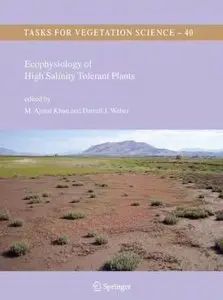Ecophysiology of High Salinity Tolerant Plants By M. Ajmal Khan, Darrell J. Weber
Publisher: Spr ing er 2005 | 420 Pages | ISBN: 1402040172 | PDF | 5 MB
Publisher: Spr ing er 2005 | 420 Pages | ISBN: 1402040172 | PDF | 5 MB
The halophytes are highly specialized plants, which have greater tolerance to salt. They can germinate, grow and reproduce successfully in saline areas which would cause the death of regular plants. Most halophytic species are found in salt marsh systems along seashores or around landlocked inland lakes and flat plains with high evaporation. The halophytes play a very significant role in the saline areas specially in the coast by overcoming the salinity in different ways, viz. with regulating mechanisms in which excess salts are excreted and without regulating mechanism, which may include succulents or cumulative types. Besides that they protect coasts from erosion and cyclones, provide feeding ground and nursery for fish, shrimps and birds. Halophytes get increasing attention today because of the steady increase of the salinity in irrigation systems in the arid and semi-arid regions where the increasing population reaches the limits of freshwater availability. In many countries, halophytes have been successfully grown on saline wasteland to provide animal fodder which have the potential for rehabilitation and even reclamation of these sites. The value of certain salt-tolerant grass species has been recognized by their incorporation in pasture improvement programs in many salt affected regions throughout the world. There have been recent advances in selecting species with high biomass and protein levels in combination with their ability to survive a wide range of environmental conditions, including salinity.
Be Happy!!!
!!!No Mirrors below, please! Follow Rules!



